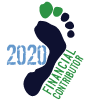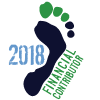The real brilliance behind running barefoot is it's completely self-limiting. Stay barefoot as much as you dare and if the skin on your feet hurts stop. When the skin on your feet doesn't hurt anymore go running again.
Very important point: the skin on the bottoms of your feet will never become superhuman tough. I ran a full marathon unshod and only was able to do it by learning how to run gently on the ground. At first I was under the delusion that I had to "toughen" my feet and somehow pound them into shape but all I got for that was blistered, bruised and battered feet.
You very well could experience blisters and that kind of thing at first but don't worry about that. The skin on your feet is like the canary in the coal mine: it'll force you to stop moving in a way that could eventually cause injury further up the body. The key, then, to increasing your miles unshod is to really work on running light and easy on those feet.
How you run light and easy I've boiled down to a 100% focus on only lifting your feet off the ground ASAP from the hip flexors and thighs. Don't try to push off and certainly don't think about foot strike or where your foot is landing as the mind-body connection is highly suggestable and a focus on your feet striking the ground will only result in feet harshly, violently striking the ground. Turn the focus around 180 degrees to just quickly lifting feet off the ground the second they touch the ground.
And quickly lifting is key, not lifting high. You're lifting quick because you want to get your muscles out-of-the-way of your springy leg tendons and let their kinetic recoil do as much work as possible. You can't will the kinetic recoil of tendons to do your bidding, you can only get out of their way and you do that by lifting feet off the ground the second they touch the ground.
If you really feel like you want to go running and your feet are a bit sore from barefoot put on the Vapor Gloves (stay away from those Brooks) and take it super easy, keeping in mind the lessons you learned about running form when you were unshod. And you may want to stick to loose, lower-traction surfaces like gravel or dirt. High-traction paved surfaces encourage over-striding even in thin shoes like Vapor Gloves. Loose, lower-traction surfaces like dirt and gravel automatically cause your body to take shorter, more careful steps very similar to how barefoot on paved surfaces does. Eventually you may find shoes on paved surfaces incredibly awkward and then you'll know you're on the right track.
Edit: really think of this period as PT and not so much as working out. It's truly the best way to "transition" by using your skin to instruct you completely. It will transition you to unshod/minimalist running full time quicker than you think but you really, truly, must listen to your feet and never push through pain. The big payoff comes when you learn how to run with minmal lateral friction to prevent blisters and pain to your skin and the side-effect is you've now learned how to run with optimal efficiency. The long miles completely unlocked for me when I figured that out. I went from thinking 6 miles was a long run to feeling like I had to do 10 miles minimum to get in a workout.








